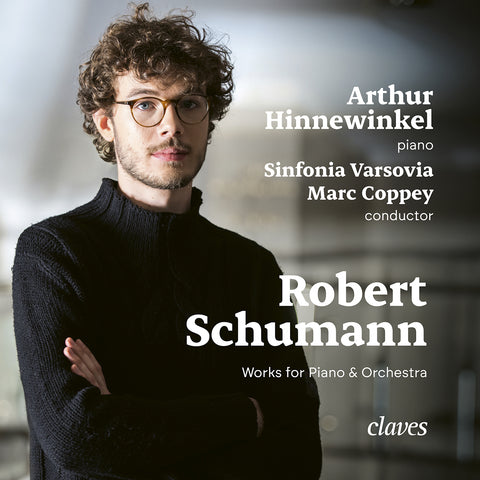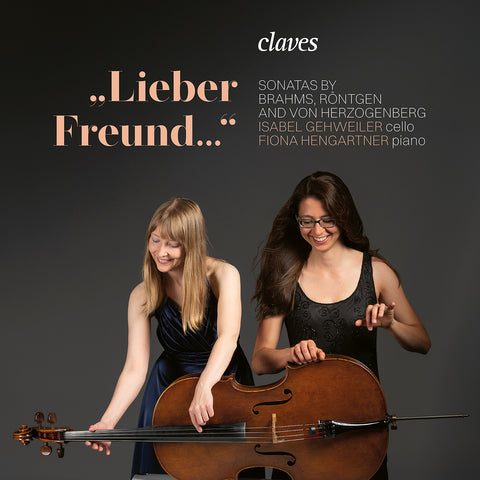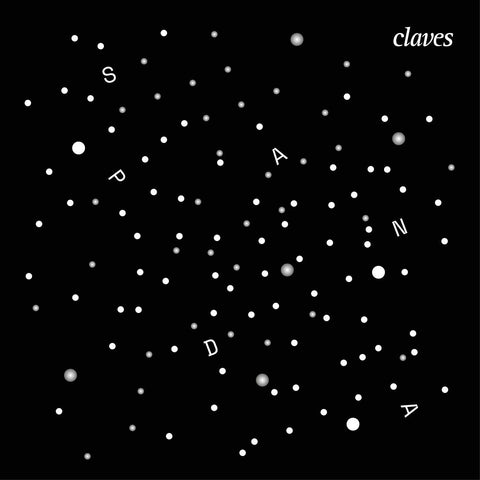(2025) «Vergehen» works by Haydn - Mozart - Kendall
Category(ies): Modern Orchestra Repertoire
Main Composer: Various composers (see collections)
Orchestra: Musikkollegium Winterthur
Conductor: Roberto González-Monjas
CD set: 1
Catalog N°:
CD 3113
Release: 09.05.2025
EAN/UPC: 7619931311326
(Will be sent some days before release date).
This album is now on repressing. Pre-order it at a special price now.
CHF 18.50
This album is no longer available on CD.
This album has not been released yet. Pre-order it from now.
CHF 18.50
This album is no longer available on CD.
CHF 18.50
VAT included for Switzerland & UE
Free shipping
This album is no longer available on CD.
VAT included for Switzerland & UE
Free shipping
This album is now on repressing. Pre-order it at a special price now.
CHF 18.50
This album is no longer available on CD.
This album has not been released yet.
Pre-order it at a special price now.
CHF 18.50
This album is no longer available on CD.
CHF 18.50
This album is no longer available on CD.
NEW: Purchases are now made in the currency of your country. Change country here or at checkout
«VERGEHEN» WORKS BY HAYDN - MOZART - KENDALL
ROBERTO GONZÁLEZ-MONJAS ON MOZART’S VIEW OF INFINITY
The three symphonies that Mozart composed over two months in the summer of 1788 inspired Roberto González-Monjas to plan three concert seasons around this trio of pieces, which are incomparably skilfully crafted works that reflect the richness of the human condition. González-Monjas and his team at the Musikkollegium Winterthur thought long and hard about how to conceptualise the dimensions inherent in Mozart’s symphonic triad. Ultimately, the conductor opted for “Becoming – Being – Transcending,” which immediately makes sense. With its grand introduction, the first of the three works, the E flat major Symphony (No. 39, Claves CD 3076), is replete with a sense of fresh incipience. By contrast, the G minor Symphony (No. 40, Claves CD 3099) throws us into the midst of the emotional turmoil of human existence – without warning. Finally, everything in Mozart’s last symphony, the ‘Jupiter’ in C major (No. 41), is directed towards the breathtaking coda of the finale.
EVEN BEAUTY MUST DIE
The Musikkollegium Winterthur’s concert season 24/25 was thus characterised by “transcendence.” Farewell and mourning, loss and pain have always been themes that are well suited to music as an art form. As in Mozart’s Requiem, music can offer consolation. It can be a meditative way of dealing with eternity, as in the Farewell from Mahler’s Song of the Earth. It can also express our fear of the end, as in Frank Martin’s Everyman Monologues, or give expression to pain, as in Tchaikovsky’s Pathétique Symphony, whose final movement could perhaps almost be construed as a plea for inconsolability. Incidentally, it was logical that Roberto González-Monjas and the Musikkollegium Winterthur should include all these works in the programme of the 24/25 season.
As an art of its time that is inextricably linked to transience, all music itself is always ‘transcendent’. In Friedrich Schiller’s elegy, Nänie – the setting by Johannes Brahms was also performed in the 24/25 season – the poet took the transience of all art to its ruthless conclusion: “Even beauty must die.” The fact that “the beautiful fades, that the perfect dies” ultimately means that one day – no later than with the demise of humanity – even Mozart’s wonderful symphonies will disappear. Schiller does, however, offer art some consolation: that of being a marvellous “lament” – while the ordinary merely “descends soundlessly to the underworld.”
THINKING – FEELING – BELIEVING
As the final work in the triad, Mozart’s Jupiter Symphony represents “transcendence.” However, it is not a lament in the direct sense, but an immensely cheerful, self-possessed and spirited work in C major. González-Monjas explains that Mozart consciously incorporated ecclesiastical style and splendour into the symphony, thus bringing a spiritual, metaphysical component into play. According to González-Monjas, in accordance with Mozart’s enlightened, rational ideals – which are particularly evident in the Symphony in E flat major (No. 39) – and the psychological insights gained from his operatic experience in the Symphony in G minor (No. 40), the composer once again broadens his horizons in his last symphony (No. 41). Mozart’s symphonic triad could therefore also be summarised with the terms ‘thinking – feeling – believing’, or in other words: ‘knowledge – experience – enlightenment’. This third phase not only surpasses the possibilities for mind and body, reason and emotion, but also reconciles them, as it were. And their contradictions are resolved. ‘Innocence – sin – redemption’ was another of González- Monjas’ suggestions.
Faith, enlightenment and salvation are religious concepts, and Mozart does indeed evoke the divine in the finale of the Jupiter Symphony – and not only with fugue technique and counterpoint, but also in the thematic content of the piece. Mozart had previously used the four-note sequence that characterises the entire final movement in settings of the mass: once to the words ‘credo, credo’ and once to ‘sanctus, sanctus’. Even those who are not aware of this will probably sense what is meant beyond the language – the progression of keys is so motto-like and eloquent.
THE LIMITS OF THE POSSIBLE
In the finale of a symphony, the tone sequence is the main theme of a sonata movement – in other words, a musical event consisting of dynamics, repose and fulfilment (we could also say: of becoming, being and transcendence). And then, when the sonata movement has actually come to an end, the four-note sequence – now inverted, harmonically enigmatic and piano – opens the famous coda, in which Mozart wants to demonstrate all his artistry to us. He continuously combines all the themes of the movement until he has assembled everything into a kind of “compact cube,” as musicologist Peter Gülke puts it. As astonishing as this is, musical progression and structured time, as in the previous sonata movement, are no longer possible. Mozart “composes to the limits of what is possible here, beyond which there is nothing to be gained” (Gülke).
The climax lights up – only briefly, and without pomp. The “cube” soon dissolves, and the movement concludes on a buoyant note. Before that, however, we may have had a brief glimpse of infinity – in the few bars in which Mozart succeeds in combining the highest artistry and stirring music with thinking and feeling, genesis and transcendence. Admittedly, this does not alter the passage of time. However, we should allow Peter Gülke to encourage us to “listen to great moments of music that are independent of the voracious passage of time.”
Felix Michel
Translation: Toby Alleyne-Gee
HANNAH KENDALL
He stretches out the north over the void and hangs the earth on nothing
He stretches out the north over the void and hangs the earth on nothing is inspired by both Schumann’s symphony No. 2 and Mozart’s ‘Jupiter’, which led me to the title; a passage from the book of Job reflecting on the greatness and power of God, with specific imagery speaking to the miraculous creation of the vast cosmos. It reminded me of Jupiter, God of sky and thunder (in some translations ‘the north’ is ‘the northern skies’, and later on the verse says, “who then can understand the thunder of his power?”) However, it also seemed to embody the sensations of profound despair, reminiscent of Schumann’s, having read his letters: feelings of being within a void; suspended without tangible means of support. This is the overall theme that I have aimed to evoke through the work. More specifically, an expansive opening brass section is constructed on a series of chords from Schumann’s symphony. Indeed, motifs from both works are quoted, and furthermore, a collection of pre-programed music boxes play Mozart’s Ah! vous dirai-je, Maman, which is a theme and variations on Twinkle Twinkle Little Star, linking back to the boundlessness of the skies, but more importantly urging for light from a seemingly all-consuming darkness.
Hannah Kendall
HANNAH KENDALL
Born in London, Hannah Kendall studied singing and composition at the University of Exeter, where she majored in singing and composition. She also gained a Master’s degree from the Royal College of Music, where she studied with Kenneth Hesketh, and a Master’s degree in Arts Management from the Royal Welsh College of Music and Drama in Cardiff. In 2015, Kendall won a Women of the Future Award in the Arts and Culture category. In 2022, the composer was also awarded the Hindemith Prize at the Schleswig-Holstein Music Festival for her “enormous compositional diversity, ranging from the classical heritage to experimental ideas.” In reference to this, Kendall says, “Evocative images within dramatic constructs are the main elements of my compositional style. I sometimes draw on aspects of my Afro-Caribbean-European heritage, and also try to find a path towards a more profound understanding of how cultural discoveries can influence the aesthetics of my music.”
ROBERTO GONZÁLEZ-MONJAS
Roberto González-Monjas is an extremely sought-after conductor and violinist who has rapidly established an international reputation. He is Chief Conductor of the Musikkollegium Winterthur and the Mozarteumorchester Salzburg. He is also Principal Guest Conductor of the Belgian National Orchestra as well as Chief Conductor of the Orquesta Sinfónica de Galicia in Spain. As a committed educator, Roberto González-Monjas founded the Iberacademy together with conductor Alejandro Posada in 2013.
The institution aims to create an efficient and sustainable model of musical education in Latin America that focuses on disadvantaged sections of the population – as well as promoting highly talented young musicians. González-Monjas is also Professor of Violin at the Guildhall School of Music & Drama, and regularly mentors and conducts the Guildhall School Chamber and Symphony Orchestra at London’s Barbican Hall. Previously, Roberto González-Monjas held the post of Concertmaster of the Orchestra dell’Accademia Nazionale di Santa Cecilia for six years and was also Concertmaster of the Musikkollegium Winterthur until the end of the 2020/21 season.
MUSIKKOLLEGIUM WINTERTHUR
The Musikkollegium Winterthur was founded in 1629 and thus boasts one of the longest-standing traditions among Europe’s musical institutions. Winterthur occupies a prominent position in Europe’s cultural landscape. This is due not only to its art collections, but also to its orchestra – the Musikkollegium Winterthur – which has been under the direction of Chief Conductor Roberto González-Monjas since the 2021/22 season. Stretching back to 1629, the history of the Musikkollegium Winterthur is still very much alive: today, the dedication of Winterthur’s bourgeois families of the 17th century is maintained by the numerous members of the orchestra association.
The early 20th century was a particularly formative period, with patron of the arts Werner Reinhart and conductor Hermann Scherchen transforming Winterthur into a centre of European musical life. Igor Stravinsky, Richard Strauss and Anton Webern all frequented the city, as did Clara Haskil and Wilhelm Furtwängler. This is a legacy that comes with obligations: no other classical symphony orchestra in Switzerland devotes itself to contemporary music with as much natural confidence as the Musikkollegium Winterthur. World premières also feature on the programme – most recently of works by composers such as Richard Dubugnon, Helena Winkelman, David Philip Hefti, Matthias Pintscher, Andrea Tarrodi and Arash Safaian. In its remaining repertoire, the orchestra focuses on the classical and early romantic periods. However, the agile ensemble also enjoys shedding fresh light on great symphonic works, such as those by Brahms, who is the subject of a recent CD recording. The orchestra can also be regularly experienced in opera and ballet productions. With more than 40 concerts per season, a versatile musical education programme and interdisciplinary formats, the Musikkollegium Winterthur is an outstanding ensemble. Many artists have contributed to the high quality of the orchestra’s performances: former chief conductors such as Franz Welser-Möst, Heinrich Schiff or Thomas Zehetmair, long-standing guest conductors such as Heinz Holliger, Reinhard Goebel and Michael Sanderling, but also internationally sought-after soloists, who are always pleased to return to the Musikkollegium Winterthur. Andreas Ottensamer, Barbara Hannigan, Sir András Schiff, Ian Bostridge and Carolin Widmann, among others, regularly give guest performances in Winterthur.
OTHER ALBUMS FROM THIS "SÉRIE"
“Even if you don’t have to understand music completely, it’s fascinating to unlock the secrets behind musical masterpieces.”
The theme of our 22/23 season, “Werden” (Becoming), is taken directly from Mozart’s splendid Symphony No. 39. This work is associated with concepts such as freemasonry, virtuosity, nature, mystery and enlightenment. But why? Can music really express these ideas, or do we merely randomly associate romantic meanings with it? How can we interpret a manuscript – hastily written in ink on parchment by candlelight in 1788? I warmly invite you to engage with the hidden aspects of this fascinating work. [View album]
"Sein" Works by Mozart - Syrse - Haydn
by Mozart - Syrse - Haydn
The Musikkollegium Winterthur’s Chief Conductor, Roberto González-Monjas, took the three last symphonies that Mozart composed – in rapid succession in the summer of 1788 – as the inspiration for this large-scale seasonal triptych. While the first symphony (No. 39) in E flat major has a slow introduction, the last (No. 41), known as the “Jupiter Symphony”, ends with a breath-taking finale, so that “beginning” and “ending” – yes, let’s say “becoming” and “transcending” – are integral to the artistic concept of this trilogy. The central G minor Symphony (No. 40) stands for “being”: for “being in the centre.” [View album]
ROBERTO GONZÁLEZ-MONJAS ON MOZART’S VIEW OF INFINITY
The three symphonies that Mozart composed over two months in the summer of 1788 inspired Roberto González-Monjas to plan three concert seasons around this trio of pieces, which are incomparably skilfully crafted works that reflect the richness of the human condition. González-Monjas and his team at the Musikkollegium Winterthur thought long and hard about how to conceptualise the dimensions inherent in Mozart’s symphonic triad. Ultimately, the conductor opted for “Becoming – Being – Transcending,” which immediately makes sense. With its grand introduction, the first of the three works, the E flat major Symphony (No. 39, Claves CD 3076), is replete with a sense of fresh incipience. By contrast, the G minor Symphony (No. 40, Claves CD 3099) throws us into the midst of the emotional turmoil of human existence – without warning. Finally, everything in Mozart’s last symphony, the ‘Jupiter’ in C major (No. 41), is directed towards the breathtaking coda of the finale.
EVEN BEAUTY MUST DIE
The Musikkollegium Winterthur’s concert season 24/25 was thus characterised by “transcendence.” Farewell and mourning, loss and pain have always been themes that are well suited to music as an art form. As in Mozart’s Requiem, music can offer consolation. It can be a meditative way of dealing with eternity, as in the Farewell from Mahler’s Song of the Earth. It can also express our fear of the end, as in Frank Martin’s Everyman Monologues, or give expression to pain, as in Tchaikovsky’s Pathétique Symphony, whose final movement could perhaps almost be construed as a plea for inconsolability. Incidentally, it was logical that Roberto González-Monjas and the Musikkollegium Winterthur should include all these works in the programme of the 24/25 season.
As an art of its time that is inextricably linked to transience, all music itself is always ‘transcendent’. In Friedrich Schiller’s elegy, Nänie – the setting by Johannes Brahms was also performed in the 24/25 season – the poet took the transience of all art to its ruthless conclusion: “Even beauty must die.” The fact that “the beautiful fades, that the perfect dies” ultimately means that one day – no later than with the demise of humanity – even Mozart’s wonderful symphonies will disappear. Schiller does, however, offer art some consolation: that of being a marvellous “lament” – while the ordinary merely “descends soundlessly to the underworld.”
THINKING – FEELING – BELIEVING
As the final work in the triad, Mozart’s Jupiter Symphony represents “transcendence.” However, it is not a lament in the direct sense, but an immensely cheerful, self-possessed and spirited work in C major. González-Monjas explains that Mozart consciously incorporated ecclesiastical style and splendour into the symphony, thus bringing a spiritual, metaphysical component into play. According to González-Monjas, in accordance with Mozart’s enlightened, rational ideals – which are particularly evident in the Symphony in E flat major (No. 39) – and the psychological insights gained from his operatic experience in the Symphony in G minor (No. 40), the composer once again broadens his horizons in his last symphony (No. 41). Mozart’s symphonic triad could therefore also be summarised with the terms ‘thinking – feeling – believing’, or in other words: ‘knowledge – experience – enlightenment’. This third phase not only surpasses the possibilities for mind and body, reason and emotion, but also reconciles them, as it were. And their contradictions are resolved. ‘Innocence – sin – redemption’ was another of González- Monjas’ suggestions.
Faith, enlightenment and salvation are religious concepts, and Mozart does indeed evoke the divine in the finale of the Jupiter Symphony – and not only with fugue technique and counterpoint, but also in the thematic content of the piece. Mozart had previously used the four-note sequence that characterises the entire final movement in settings of the mass: once to the words ‘credo, credo’ and once to ‘sanctus, sanctus’. Even those who are not aware of this will probably sense what is meant beyond the language – the progression of keys is so motto-like and eloquent.
THE LIMITS OF THE POSSIBLE
In the finale of a symphony, the tone sequence is the main theme of a sonata movement – in other words, a musical event consisting of dynamics, repose and fulfilment (we could also say: of becoming, being and transcendence). And then, when the sonata movement has actually come to an end, the four-note sequence – now inverted, harmonically enigmatic and piano – opens the famous coda, in which Mozart wants to demonstrate all his artistry to us. He continuously combines all the themes of the movement until he has assembled everything into a kind of “compact cube,” as musicologist Peter Gülke puts it. As astonishing as this is, musical progression and structured time, as in the previous sonata movement, are no longer possible. Mozart “composes to the limits of what is possible here, beyond which there is nothing to be gained” (Gülke).
The climax lights up – only briefly, and without pomp. The “cube” soon dissolves, and the movement concludes on a buoyant note. Before that, however, we may have had a brief glimpse of infinity – in the few bars in which Mozart succeeds in combining the highest artistry and stirring music with thinking and feeling, genesis and transcendence. Admittedly, this does not alter the passage of time. However, we should allow Peter Gülke to encourage us to “listen to great moments of music that are independent of the voracious passage of time.”
Felix Michel
Translation: Toby Alleyne-Gee
HANNAH KENDALL
He stretches out the north over the void and hangs the earth on nothing
He stretches out the north over the void and hangs the earth on nothing is inspired by both Schumann’s symphony No. 2 and Mozart’s ‘Jupiter’, which led me to the title; a passage from the book of Job reflecting on the greatness and power of God, with specific imagery speaking to the miraculous creation of the vast cosmos. It reminded me of Jupiter, God of sky and thunder (in some translations ‘the north’ is ‘the northern skies’, and later on the verse says, “who then can understand the thunder of his power?”) However, it also seemed to embody the sensations of profound despair, reminiscent of Schumann’s, having read his letters: feelings of being within a void; suspended without tangible means of support. This is the overall theme that I have aimed to evoke through the work. More specifically, an expansive opening brass section is constructed on a series of chords from Schumann’s symphony. Indeed, motifs from both works are quoted, and furthermore, a collection of pre-programed music boxes play Mozart’s Ah! vous dirai-je, Maman, which is a theme and variations on Twinkle Twinkle Little Star, linking back to the boundlessness of the skies, but more importantly urging for light from a seemingly all-consuming darkness.
Hannah Kendall
HANNAH KENDALL
Born in London, Hannah Kendall studied singing and composition at the University of Exeter, where she majored in singing and composition. She also gained a Master’s degree from the Royal College of Music, where she studied with Kenneth Hesketh, and a Master’s degree in Arts Management from the Royal Welsh College of Music and Drama in Cardiff. In 2015, Kendall won a Women of the Future Award in the Arts and Culture category. In 2022, the composer was also awarded the Hindemith Prize at the Schleswig-Holstein Music Festival for her “enormous compositional diversity, ranging from the classical heritage to experimental ideas.” In reference to this, Kendall says, “Evocative images within dramatic constructs are the main elements of my compositional style. I sometimes draw on aspects of my Afro-Caribbean-European heritage, and also try to find a path towards a more profound understanding of how cultural discoveries can influence the aesthetics of my music.”
ROBERTO GONZÁLEZ-MONJAS
Roberto González-Monjas is an extremely sought-after conductor and violinist who has rapidly established an international reputation. He is Chief Conductor of the Musikkollegium Winterthur and the Mozarteumorchester Salzburg. He is also Principal Guest Conductor of the Belgian National Orchestra as well as Chief Conductor of the Orquesta Sinfónica de Galicia in Spain. As a committed educator, Roberto González-Monjas founded the Iberacademy together with conductor Alejandro Posada in 2013.
The institution aims to create an efficient and sustainable model of musical education in Latin America that focuses on disadvantaged sections of the population – as well as promoting highly talented young musicians. González-Monjas is also Professor of Violin at the Guildhall School of Music & Drama, and regularly mentors and conducts the Guildhall School Chamber and Symphony Orchestra at London’s Barbican Hall. Previously, Roberto González-Monjas held the post of Concertmaster of the Orchestra dell’Accademia Nazionale di Santa Cecilia for six years and was also Concertmaster of the Musikkollegium Winterthur until the end of the 2020/21 season.
MUSIKKOLLEGIUM WINTERTHUR
The Musikkollegium Winterthur was founded in 1629 and thus boasts one of the longest-standing traditions among Europe’s musical institutions. Winterthur occupies a prominent position in Europe’s cultural landscape. This is due not only to its art collections, but also to its orchestra – the Musikkollegium Winterthur – which has been under the direction of Chief Conductor Roberto González-Monjas since the 2021/22 season. Stretching back to 1629, the history of the Musikkollegium Winterthur is still very much alive: today, the dedication of Winterthur’s bourgeois families of the 17th century is maintained by the numerous members of the orchestra association.
The early 20th century was a particularly formative period, with patron of the arts Werner Reinhart and conductor Hermann Scherchen transforming Winterthur into a centre of European musical life. Igor Stravinsky, Richard Strauss and Anton Webern all frequented the city, as did Clara Haskil and Wilhelm Furtwängler. This is a legacy that comes with obligations: no other classical symphony orchestra in Switzerland devotes itself to contemporary music with as much natural confidence as the Musikkollegium Winterthur. World premières also feature on the programme – most recently of works by composers such as Richard Dubugnon, Helena Winkelman, David Philip Hefti, Matthias Pintscher, Andrea Tarrodi and Arash Safaian. In its remaining repertoire, the orchestra focuses on the classical and early romantic periods. However, the agile ensemble also enjoys shedding fresh light on great symphonic works, such as those by Brahms, who is the subject of a recent CD recording. The orchestra can also be regularly experienced in opera and ballet productions. With more than 40 concerts per season, a versatile musical education programme and interdisciplinary formats, the Musikkollegium Winterthur is an outstanding ensemble. Many artists have contributed to the high quality of the orchestra’s performances: former chief conductors such as Franz Welser-Möst, Heinrich Schiff or Thomas Zehetmair, long-standing guest conductors such as Heinz Holliger, Reinhard Goebel and Michael Sanderling, but also internationally sought-after soloists, who are always pleased to return to the Musikkollegium Winterthur. Andreas Ottensamer, Barbara Hannigan, Sir András Schiff, Ian Bostridge and Carolin Widmann, among others, regularly give guest performances in Winterthur.
OTHER ALBUMS FROM THIS "SÉRIE"
“Even if you don’t have to understand music completely, it’s fascinating to unlock the secrets behind musical masterpieces.”
The theme of our 22/23 season, “Werden” (Becoming), is taken directly from Mozart’s splendid Symphony No. 39. This work is associated with concepts such as freemasonry, virtuosity, nature, mystery and enlightenment. But why? Can music really express these ideas, or do we merely randomly associate romantic meanings with it? How can we interpret a manuscript – hastily written in ink on parchment by candlelight in 1788? I warmly invite you to engage with the hidden aspects of this fascinating work. [View album]
"Sein" Works by Mozart - Syrse - Haydn
by Mozart - Syrse - Haydn
The Musikkollegium Winterthur’s Chief Conductor, Roberto González-Monjas, took the three last symphonies that Mozart composed – in rapid succession in the summer of 1788 – as the inspiration for this large-scale seasonal triptych. While the first symphony (No. 39) in E flat major has a slow introduction, the last (No. 41), known as the “Jupiter Symphony”, ends with a breath-taking finale, so that “beginning” and “ending” – yes, let’s say “becoming” and “transcending” – are integral to the artistic concept of this trilogy. The central G minor Symphony (No. 40) stands for “being”: for “being in the centre.” [View album]
Return to the album | Read the booklet | Composer(s): Various Composers | Main Artist: Roberto González-Monjas


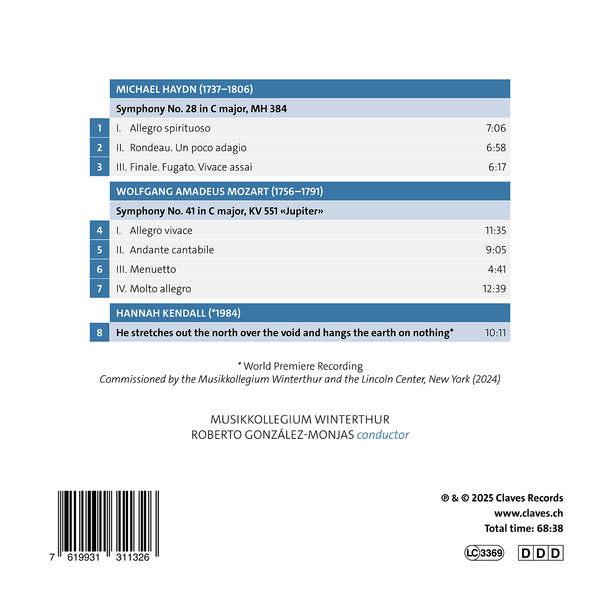

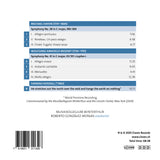


 "Werden" Works by Mozart - Beethoven - Tarrodi
"Werden" Works by Mozart - Beethoven - Tarrodi





